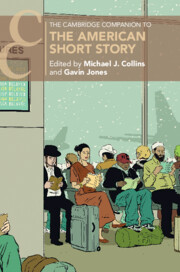Refine search
Actions for selected content:
29 results

Networks of Reception in the Eighteenth-Century British Press and Laurence Sterne
-
- Published online:
- 17 October 2025
- Print publication:
- 13 November 2025
-
- Element
- Export citation
9 - Sounding the Nation(s)
- from Part II - The Conceptual Presence of Strings
-
- Book:
- Violin Culture in Britain, 1870–1930
- Published online:
- 13 September 2025
- Print publication:
- 18 September 2025, pp 262-303
-
- Chapter
- Export citation
Chapter 4 - Women Take Up Arms
-
-
- Book:
- Antifascism(s) in Latin America and the Caribbean
- Published online:
- 21 July 2025
- Print publication:
- 07 August 2025, pp 90-106
-
- Chapter
- Export citation
Japan’s local imperialists: Expansive ideas of hometown and empire within the Asia-Pacific world
-
- Journal:
- Modern Asian Studies / Volume 59 / Issue 2 / March 2025
- Published online by Cambridge University Press:
- 04 August 2025, pp. 398-426
- Print publication:
- March 2025
-
- Article
- Export citation
Chapter 5 - Civil War, Guerre de Plume, and the Emergence of Early Haitian Periodical Culture
-
-
- Book:
- A History of Haitian Literature
- Published online:
- 07 November 2024
- Print publication:
- 21 November 2024, pp 75-94
-
- Chapter
- Export citation
6 - An Age of Publicity
-
- Book:
- Citizen Cowboy
- Published online:
- 16 August 2024
- Print publication:
- 29 August 2024, pp 127-150
-
- Chapter
- Export citation
Chapter Seven - Myth 7 You Can’t Get a Job if You Didn’t Write Well in College
-
- Book:
- You Can't Write That
- Published online:
- 09 November 2023
- Print publication:
- 23 November 2023, pp 126-144
-
- Chapter
-
- You have access
- Open access
- HTML
- Export citation
18 - From ‘Stereotyped Postures’ to ‘Credible Avant-Garde Strategies’
- from Part V - Modern Metal Genres
-
-
- Book:
- The Cambridge Companion to Metal Music
- Published online:
- 31 August 2023
- Print publication:
- 14 September 2023, pp 251-264
-
- Chapter
- Export citation
19 - Japanese Mass Media
- from Part III - Social Practices and Cultures in Modern Japan
-
-
- Book:
- The New Cambridge History of Japan
- Published online:
- 19 May 2023
- Print publication:
- 08 June 2023, pp 645-670
-
- Chapter
- Export citation
Chapter 11 - Local Color to Multiculturalism
- from Part II - Histories
-
-
- Book:
- The Cambridge Companion to the American Short Story
- Published online:
- 11 May 2023
- Print publication:
- 25 May 2023, pp 174-188
-
- Chapter
- Export citation
Chapter 2 - The Short Story and the Early Magazine
- from Part I - Contexts
-
-
- Book:
- The Cambridge Companion to the American Short Story
- Published online:
- 11 May 2023
- Print publication:
- 25 May 2023, pp 31-45
-
- Chapter
- Export citation
Chapter 3 - The Short Story Fad
- from Part I - Contexts
-
-
- Book:
- The Cambridge Companion to the American Short Story
- Published online:
- 11 May 2023
- Print publication:
- 25 May 2023, pp 46-61
-
- Chapter
- Export citation

The Cambridge Companion to the American Short Story
-
- Published online:
- 11 May 2023
- Print publication:
- 25 May 2023
Chapter 4 - The Continental European Literary Scene
- from Part I - Literary Contexts
-
-
- Book:
- A History of World War One Poetry
- Published online:
- 18 January 2023
- Print publication:
- 12 January 2023, pp 66-78
-
- Chapter
- Export citation
Chapter 10 - A Disruptive and Dangerous Education and the Wealth of the Nation
-
-
- Book:
- Institutions of Literature, 1700–1900
- Published online:
- 30 June 2022
- Print publication:
- 21 July 2022, pp 196-214
-
- Chapter
- Export citation
Chapter 6 - Walt Whitman
- from Part I - Careers
-
-
- Book:
- American Literature in Transition, 1851–1877
- Published online:
- 15 June 2022
- Print publication:
- 23 June 2022, pp 91-106
-
- Chapter
- Export citation
Chapter 7 - Anonymous
- from Part I - Careers
-
-
- Book:
- American Literature in Transition, 1851–1877
- Published online:
- 15 June 2022
- Print publication:
- 23 June 2022, pp 107-124
-
- Chapter
- Export citation
Publish the Picture at Your Peril: Visual Ideas and the Commercial Apparatus of Life Magazine
-
- Journal:
- The Journal of the Gilded Age and Progressive Era / Volume 20 / Issue 2 / April 2021
- Published online by Cambridge University Press:
- 22 April 2021, pp. 301-324
- Print publication:
- April 2021
-
- Article
- Export citation
Chapter 8 - Periodical Culture
- from Part II - Cultural and Political Transitions
-
-
- Book:
- Caribbean Literature in Transition, 1920–1970
- Published online:
- 16 December 2020
- Print publication:
- 14 January 2021, pp 131-144
-
- Chapter
- Export citation
9 - Publishing
- from Part II - Media-Dependent Entertainment
-
- Book:
- Entertainment Industry Economics
- Published online:
- 26 June 2020
- Print publication:
- 23 July 2020, pp 405-427
-
- Chapter
- Export citation
